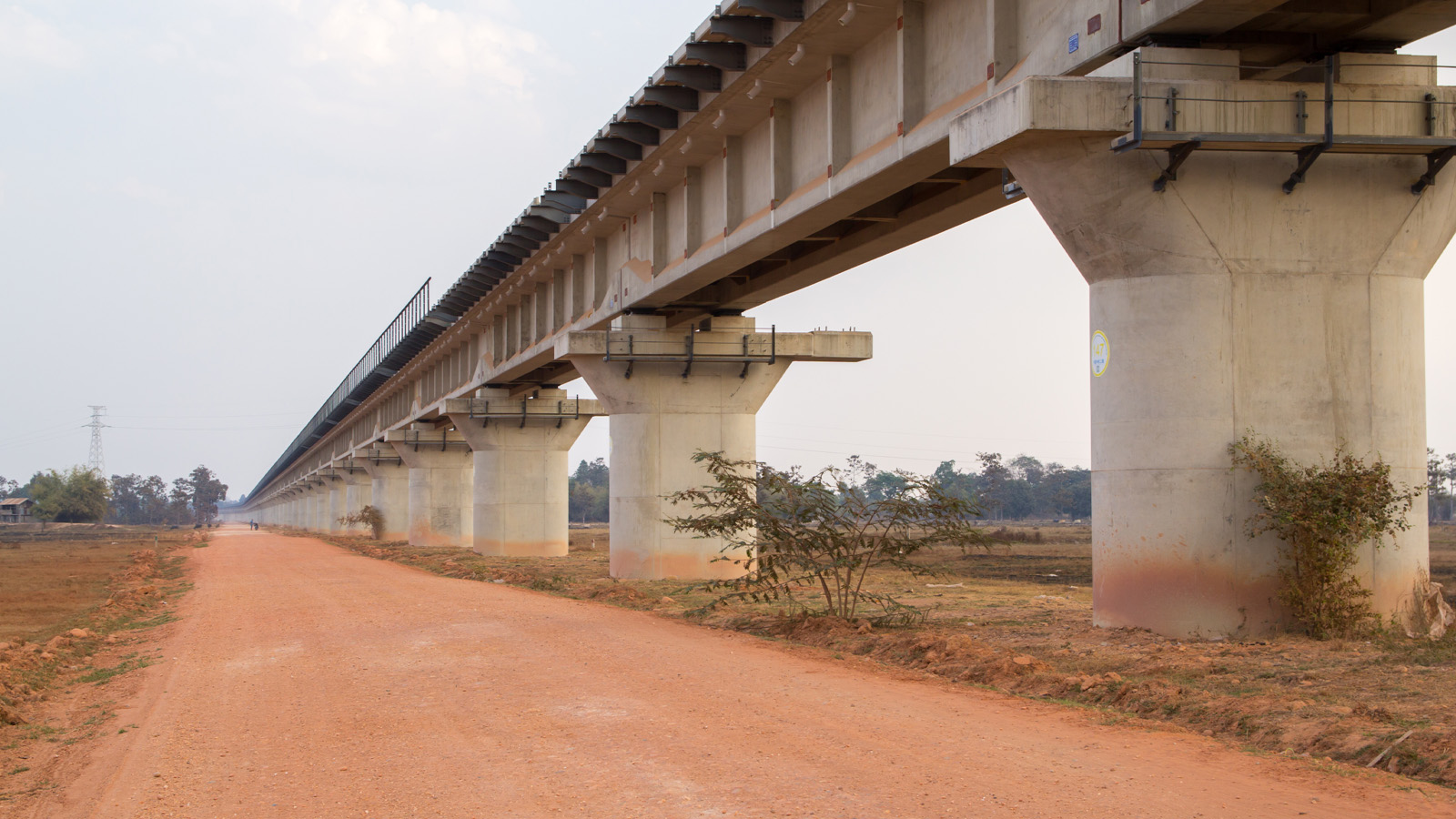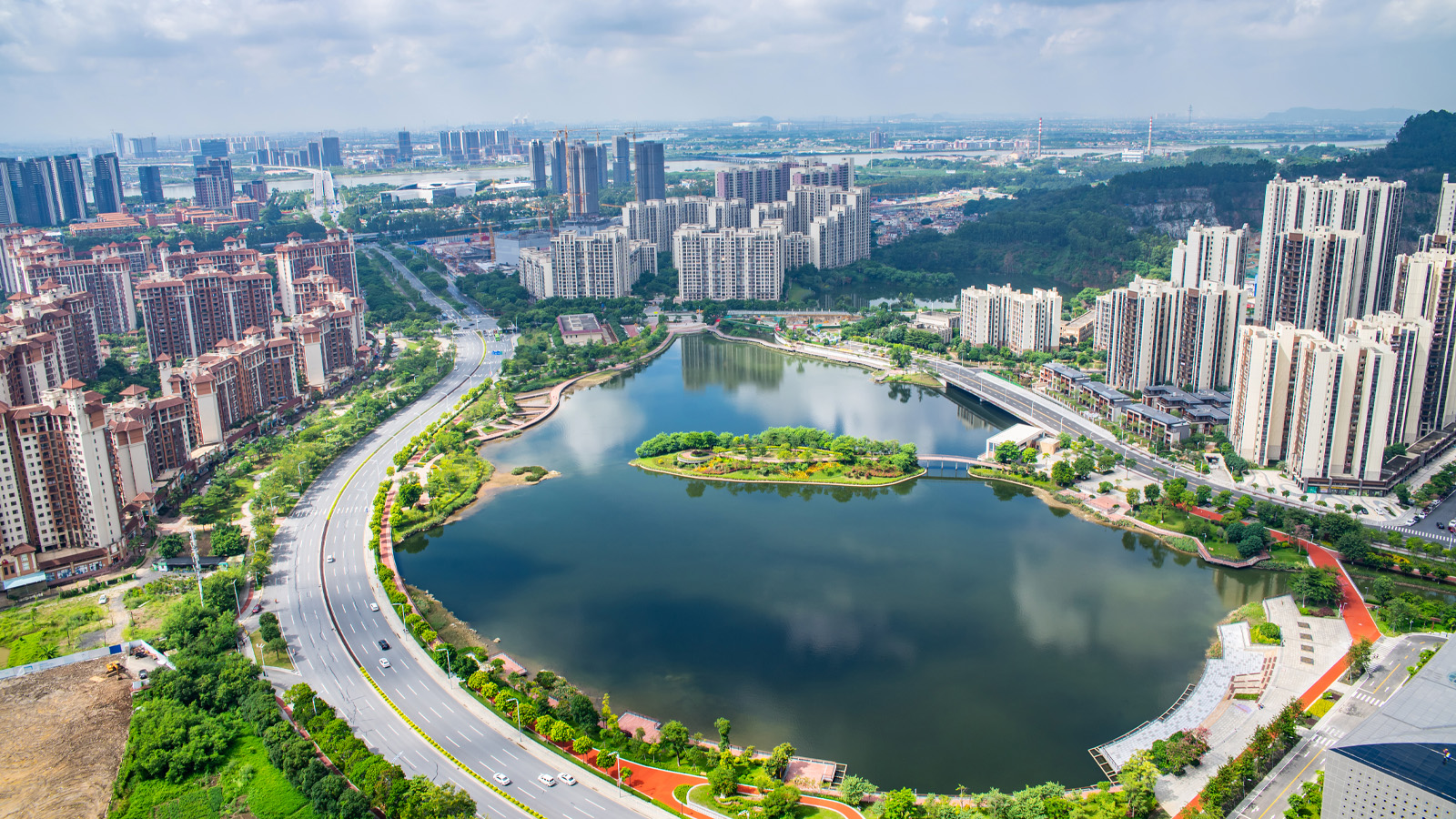%20Andrew%20Deraff_Figure%201.jpg)
The Belt and Road Initiative (BRI) broke ground on its first project, the Karot Hydropower dam near Islamabad in Pakistan, in 2016. It has now backed more than 100 projects, most of them in Asia.
The grand scheme has slowed in the wake of COVID-19, but since the onset of the pandemic, it has funded the road network in Uzbekistan, a metro line in Turkey, water and sanitation in rural Bangladesh, engineering improvements on a highway in Laos, a waste-management system in the Maldives and, most recently, the New Delhi rapid-transit system.
The Asian Infrastructure Investment Bank (AIIB), which is backing the initiative, began operations in 2016 and has so far approved 101 projects for financing, including a hefty dose of power plants, railways and road networks. But it also includes tangential projects such as upgrades to informal settlements in Indonesia, affordable housing in India, fibre-optic cable installation in Cambodia, small-business stimulus loans in Kyrgyzstan, and the “Prosperous Villages” project to provide infrastructure and services to rural communities in Uzbekistan. Clean-energy and green-tech projects are becoming more common.
Most recently, COVID-19 funding to Turkey, Georgia, Russia, Bangladesh, Indonesia, the Philippines, Mongolia, the Maldives, Vietnam, Kazakhstan, India and Pakistan has been included in the initiative. Those are not connected to the bank’s original mandate, to fund infrastructure.
%20Andrew%20Deraff_Figure%202.jpg)

Has BRI been successful?
“It all depends on what the initiative means,” says Peter Frankopan, professor of global history at the University of Oxford. “There have been some very high-profile misfires. But the fact that it[?] is a now a formal part of the Chinese Communist Party constitution means that evaluations need to be done and re-done, not only now but in the future.”
One BRI-funded misfire was the Hambantota port in Sri Lanka. A state-owned Chinese company took ownership of the project for 99 years to wipe out $1.4bn in debt. Since then, governments have been much warier of taking on financing from Beijing.
Frankopan, who wrote The Silk Roads and its 2018 sequel The New Silk Roads, points out that China, in offering to fund much-needed infrastructure typically in poorer nations, has often experienced a red-carpet welcome. “In many parts of the world, China is pushing, if not an open door, then at least one that opens relatively easily,” he says. “On the other hand, implementation, execution and the public narrative have often left much to be desired.”
The Asian Development Bank estimated in 2017 that Asia needs $1.7tr in infrastructure investment each year between now and 2030 if some of the world’s fastest-growing economies aren’t going to be held back. Emerging Asia therefore needs to invest a total $26tr in infrastructure just to sustain its growth, reduce poverty and respond to climate change.

It is not yet clear how COVID-19 will shift those priorities. Asia’s cash-strapped economies will need to tighten their purse strings even further. They need funding. Infrastructure spending is a tried and tested way for a government to introduce stimulus and create jobs. However, the coffers of many Asian nations may be so empty that all but essential infrastructure schemes see their blueprints shelved.
“Many nations are suffering and pumping a lot of money into society to help unemployment and to help people carry on normal life,” Daniel Cheung, director and head of infrastructure and contract services at Turner & Townsend in north-east Asia, notes. “They’re not investing for a better future. It’s really just about saving people’s lives so they have food to eat next week.”
“In many parts of the world, China is pushing, if not an open door, then at least one that opens relatively easily” Peter Frankopan, University of Oxford
Tightening the belt
It will be hard politically for governments to justify extensive foreign aid at this stage. So this and other multinational schemes may find additional funding tough to come by. The ambitions of BRI, first proposed in 2013, may also scale back, partly due to China’s domestic spending, and partly due to political pressure from abroad.
“Countries that have developed strong alliances with China will continue to receive money from China,” Cheung says. “But BRI was extending to countries such as the UK and other advanced economies. I believe that after COVID-19 and all the recent issues, the Chinese push to those places would be a lot less.”
China’s priorities are shifting. This October, China set out its latest five-year plan, to run through 2025, and its longer-term objectives through 2035. With it, the country has taken a notable turn inwards, adopting a “dual circulation strategy”, a phrase coined by President Xi Jinping in May this year. This stresses the importance of “internal circulation”, meaning to enhance domestic demand and supply, plays down the “external circulation” of international trade and cross-border investment.
China has set its sights on boosting per-capita GDP to levels similar to those in moderately developed nations by 2035. That implies annual average growth of at least 3–4% for the next 15 years, although shorter-term targets are likely to be for growth around 5.5%.
%20Andrew%20Deraff_Figure%204.jpg)

China’s Silicon Valley
If China does decide that its investment is better spent nearer home, there’s another grand scheme that is a prime target. The Greater Bay Area (GBA) project is clearly an attempt to liken the development around the tech-heavy Pearl River Delta area to that of the Bay Area surrounding San Francisco and Silicon Valley. It is also the clearest way for professionals in the built environment to benefit from onshore projects linked to BRI, but interconnecting southern China.
In these financially uncertain times, the viability of these projects can be enhanced by the commitment to globally recognised professional and ethical standards. Cheung says: “RICS professionals can always find opportunities in these areas, either helping Chinese investors or contractors to understand better their risk and how to deliver projects, or to support institutional investors to do these assessments from the funder and consortium perspective to avoid risk.”
On the operational side, that means opportunities in risk management, project management, commercial management, contract management, procurement and due diligence.
Cheung says there’s a need for the overseas qualifications held by real-estate professionals in Hong Kong and farther afield to be recognised in mainland China.
“If there are more relaxations, I would welcome this,” Cheung explains. “We are exploring recent policy saying Hong Kong-registered quantity surveying or professional-services firms may be able to operate in the GBA in a much easier way, rather than comply with all the Chinese qualifications and requirements.”
In China, the regulation of surveying practices covers two levels – firms and individuals. Professional firms need to meet certain requirements and be registered with the relevant authorities. Individuals need to pass written examinations, fulfill local practice requirements and be employed by the registered professional firms.
Under the Closer Economic Partnership Arrangement – a reciprocal agreement signed by various bodies and in operation since June this year – professionals from outside China can register with local authorities and practise in the country. This is subject to certain requirements, and dependent on professionals holding the relevant qualifications from their corresponding local body.
Clement Lau FRICS is director and head of development and valuations, commercial property, at Hongkong Land. He cites this example: "General practice surveyors in Hong Kong can directly register to practise in Qianhai, Hengqin and Nansha (cities in Greater Bay Area) to provide valuation services without the need to obtain the local professional qualification through mutual recognition."
"The 'relaxaton' of the requirements refers more to the registration than to the professional competences," explains Lau. "It is my belief that Hong Kong professionals are on an equal par to counterparts in China, in terms of professional competences. However, it would take time to obtain the equivalent Chinese qualifications – and obviously one needs to be able to read Chinese."
Changing the legal and regulatory requirements for cross-border professionals is one way for mainland China to push both the Greater Bay Area and Belt and Road Initiative at the same time. That now seems to be occurring, slowly.
“There are still some practical hurdles,” Cheung says. The clarity of these policies will be key for foreign-registered companies and RICS professionals to work there. Change is “happening but it’s just the beginning so things are a little bit unclear. It’s taking baby steps".
%20Andrew%20Deraff_Figure%206.jpg)
“Many nations are not investing for a better future. It’s really just about saving people’s lives so they have food to eat next week” Daniel Cheung, Turner & Townsend
